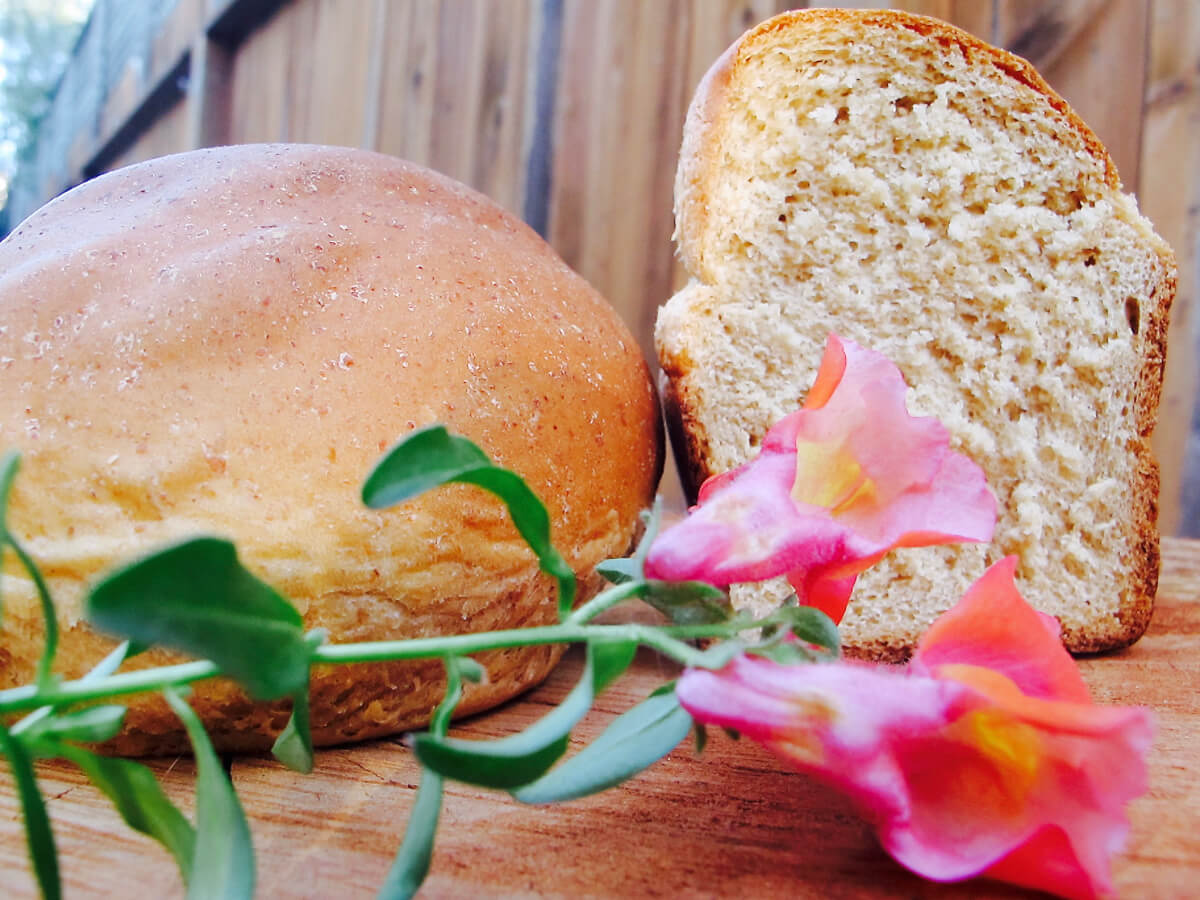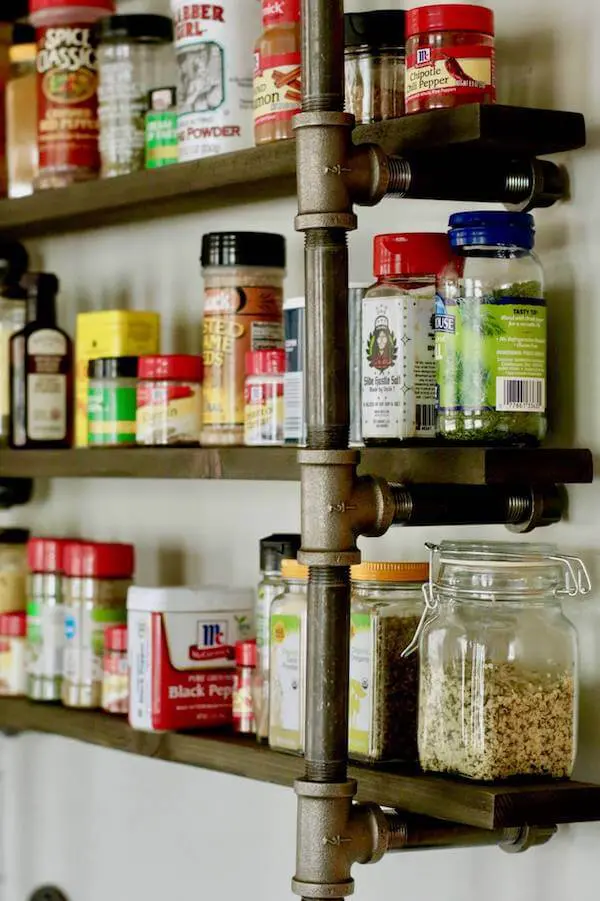
While gathering my ingredients for this bold bread recipe, I happened upon a snarky lady who presumably exclaimed to me as I was grabbing for the 3-pack of Fleischmann’s Yeast, “I see someone got a new bread machine for Christmas.”
Okay…it’s not that I’m at all against bread machines, but, when it comes to maximizing flavor, texture and quality (not to mention the sheer art of it), hand-making bread is the only way to go.
“Nope. I’m going old-school and making it myself.”
“Oh, reeeeeeeally?”
Yes, lady. Really. I spun on my Nikes with pride, knowing my Aunt Mim would’ve made a just-as-snarky reply. Nah. The satisfaction of having the balls know-how to make my own bread was victory enough for me.
And, yes…it may seem a culinary courageous move to actually make bread from scratch, but, if you look at it as more of an adventure, you’ll find the experience quite thrilling!
After all, it’s been done for centuries – it’s practically our moral obligation to attempt this baking feat at least once.
See Also: Chef’d Launches Chef-Driven Cuisine for the Home Chef
As for this particular recipe, Swedish Rye bread, it is one of my most favorites and a long-time tradition in my Scandinavian family to make a loaf or more during the winter months (my mom, Lois, used to make loaves as a super unique Christmas gift for our teachers – they always came back wanting the recipe which we later included).
It’s a hearty, fennel-flavorful bread, perfect as is, served with hot soup, toasted with a generous slab of butter, or sliced thick to sandwich your favorite deli meats. Yum!
Mouth. Watering.
But, with anything worth working for, I discovered by way of trial and error some tricks ‘n tips of the trade that’ll help you master this recipe in no time. Let’s get started!
Swedish Rye Bread
1 1/2 c. milk 1/2 c. water, 2 tbsp. of water
1/2 c. brown sugar 2 pkg dry yeast
1/4 c. shortening 1 tsp. fennel seed
1/4 c. molasses 1 1/2 c. Bob’s Red Mill rye flour
1 tsp. salt 4 c. All Purpose flour (to start, possibly 5 c.)
Tip: rye flour can sometimes be a tad tricky to find. I found some at Bristol Farms.
Directions:
In a medium pot, heat milk to boiling point, then remove from heat (TIP: be sure to keep an eye on this – it can quickly scorch!). Add to the pot and mix together brown sugar, shortening, molasses and salt while milk is hot, then cool to luke warm.
TRICK: spray oil into the measuring cup for your molasses – it’ll make it super easy to pour out into your pot!
In a small cup or ramekin warm the 1/2 cup of water to luke warm and add yeast, (TIP: it is important that the water is not too hot so it doesn’t kill the yeast) then stir until yeast is dissolved.
Put fennel seeds in a small bowl, add 2 Tbsp. hot water and let it stand for 10 minutes to extract the flavor from the seeds (you can also microwave it for 30 seconds).
Pour the 2 Tbsp. of the flavored water into the milk mixture, along with the yeast mixture and rye flour, then beat until smooth with beater.
Add 2 cups of flour at a time and beat by hand until you have to start kneading by placing dough on a floured surface. TIP: your hands are the best tools…use them generously!
Continue adding flour as you knead. Dough should be satiny-looking. Knead until smooth and elastic.
TRICK: if your dough is still a little grainy, let it rest for about 10-15 minutes – you’ll return to a more softer roll to knead.
TIP: knead like your life depended on it! Well…not really, but you can’t over-work this dough – it’s tough like a Swede! The more you knead, the softer the results!
Place in a greased bowl, cover with plastic wrap (or, if the bowl is deep enough, a damp towel). TIP: though, for centuries bakers didn’t have access to plastic wrap, ya don’t want the rising bread to stick to your towel! Let rise until double in size (1st time, takes about an hour).
Divide dough into individual loaves and knead each loaf to remove all air bubbles. Place in two 8 in. round pans or make smaller individual loaves/rolls.
Let rise to double in size (second time, again, about an hour) and bake in 375 degree oven for 35 to 48 mins. If you’re baking smaller loaves, baking time is reduced to about 20 minutes. TRICK: the bread should be golden brown when done, or you can tap the top of it – if it sounds hollow, it’s done!
How to keep your Swedish Rye bread fresh…
Once your bread has cooled, cover in plastic wrap, then tin foil, then place in the freezer. Leave out the loaf you plan on eating right away. But, this bread does not have any preservatives, so you’ll need to freeze it if you’re not going to eat it in the next couple of days.
To defrost, leave on your counter for several hours…it’ll be FRESH to eat! Yum!
Good luck! The more you try, the more you’ll master this art form. And, you might just want to sell your bread machine (or ditch the idea of buying one) after you taste this delicious loaf!
All photography by Skaie Knox, HomeJelly



















